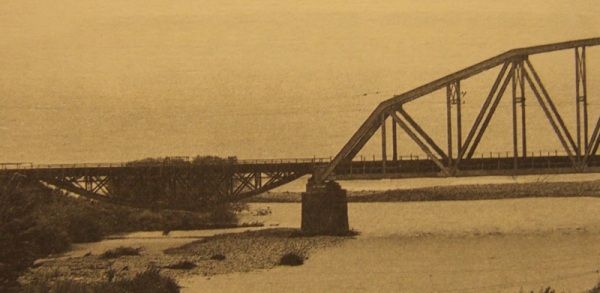Vladimir Shukhov
Vladimir Shukhov was born in a town of Graivoron, Belgorod Oblast, into a petty noble family. He was a Russian engineer-polymath, scientist and architect renowned for his pioneering works on new methods of analysis for structural engineering that led to breakthroughs in industrial design of world’s first hyperboloid structures, lattice shell structures, tensile structures, gridshell structures, oil reservoirs, pipelines, boilers, ships and barges.
We can read at his biography:
Shukhov always found time for a passionate hobby photography. The Photographic works of Shukhov opened new trends ahead of their flourishing of Fine art photography. He made photos in various genres: reporting, city landscape, etc. About two thousand photos and negatives made by Shukhov have survived until this day.
After the October Revolution Shukhov decided to stay in the Soviet Union despite having received alluring job offers from around the world. Many signal Soviet engineering projects of the 1920s were associated with his name. In 1919 he framed his slogan: We should work independently from politics. The buildings, boilers, beams would be needed and so would we. In the later 1930s during the Great Purge he retired from engineering work but was not arrested or persecuted.
Caption: Double curvature steel lattice shell by Shukhov in Vyksa, 1897
Caption: Shukhov Towers on the Oka River, 1988.
Besides the innovations he brought to the oil industry and the construction of numerous bridges and buildings, Shukhov was the inventor of a new family of doubly-curved structural forms. These forms, based on non-Euclidean hyperbolic geometry, are known today as hyperboloids of revolution. Shukhov developed not only many varieties of light-weight hyperboloid towers and roof systems, but also the mathematics for their analysis. Shukhov is particularly reputed for his original designs of hyperboloid towers such as the Shukhov Tower.
Caption: Shukhov Radio Tower. 1919-1922, Moscow.
Caption: The world’s first steel tensile structure by Shukhov (during construction), Nizhny Novgorod, 1896.
Among others, Shukhov’s projects were:
– An oil pipeline, the first in the Russian Empire, between Balkhany and Cherny Gorod near Baku (12 km, 1878 complete, used by the Branobel). By 1883 the total length of Shukhov-designed oil pipelines in Baku exceeded 94 km, transporting 30 thousands barrels of oil per day. In 1894 a similar pipeline network was built in Grozny. Shukhov designed the first Trans-Caucasian kerosene pipeline between Baku and Batum (835 km long) and Grozny-Tuapse pipeline (618 km long).
– A superior design for water-mains. Shukhov designed complete water-supply systems for the cities of Tambov, Kharkov, Voronezh and many others. In that age of infectious diseases his water-supply systems literally saved thousands of lives.
– A superior design for oil-tanker barges (less than half of the metal previously required), 84 150-meters long barges were built (mostly for the Volga river) as well as the first Russian sea-worthy oil tanker ship. His approach to the ship strength analysis (using the model of a shell on an elastic foundation) was absolutely novel for that time.
– Shukhov-designed inexpensive oil tanks with the bottom calculated as a membrane on elastic foundation. They became very popular among oil-producers of the Imperial Russia. By 1881, 130 such tanks were built in Baku alone.
—–
Recommended reading:
The Shukhov Tower Foundation web-site
Vladimir Shukhov at wapedia






Trackbacks